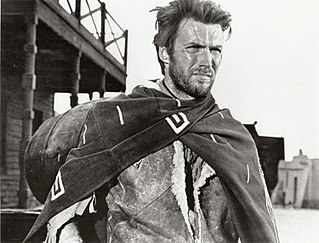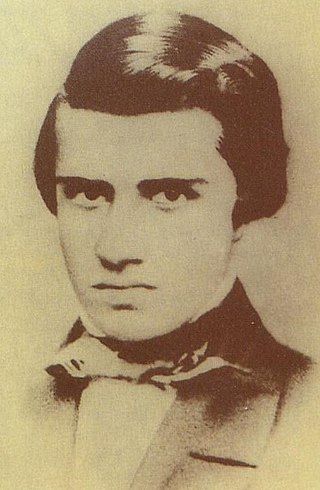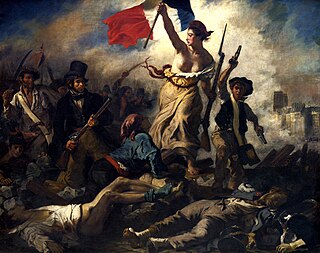Related Research Articles

John William Polidori was a British writer and physician. He is known for his associations with the Romantic movement and credited by some as the creator of the vampire genre of fantasy fiction. His most successful work was the short story "The Vampyre" (1819), the first published modern vampire story. Although the story was at first erroneously credited to Lord Byron, both Byron and Polidori affirmed that the author was Polidori.

Romanticism is an artistic and intellectual movement that originated in Europe towards the end of the 18th century. In most parts of Europe, it was at its peak from approximately 1800 to 1850. Romanticism was characterized by its emphasis on emotion and individualism as well as glorification of the past and nature, preferring the medieval to the classical. Romanticism was partly a reaction to the Industrial Revolution, and the prevailing ideology of the Age of Enlightenment, especially the scientific rationalization of Nature. It was embodied most strongly in the visual arts, music, and literature; it also had a major impact on historiography, education, chess, social sciences, and the natural sciences. It had a significant and complex effect on politics: Romantic thinking influenced conservatism, liberalism, radicalism, and nationalism.

Literary criticism is the study, a genre of arts criticism, evaluation, and interpretation of literature. Modern literary criticism is often influenced by literary theory, which is the philosophical discussion of literature's goals and methods. Although the two activities are closely related, literary critics are not always, and have not always been, theorists.
Herman Northrop Frye was a Canadian literary critic and literary theorist, considered one of the most influential of the 20th century.

The Sorrows of Young Werther is a 1774 epistolary novel by Johann Wolfgang Goethe, which appeared as a revised edition in 1787. It was one of the main novels in the Sturm und Drang period in German literature, and influenced the later Romantic movement. Goethe, aged 24 at the time, finished Werther in five and a half weeks of intensive writing in January to March 1774. It instantly placed him among the foremost international literary celebrities and was among the best known of his works.

An antihero or antiheroine is a main character in a story who may lack conventional heroic qualities and attributes, such as idealism, courage, and morality. Although antiheroes may sometimes perform actions that most of the audience considers morally correct, their reasons for doing so may not align with the audience's morality. An antihero typically exhibits one of the "Dark triad" personality traits, which include narcissism, psychopathy, and machiavellianism.
Narrative poetry is a form of poetry that tells a story, often using the voices of both a narrator and characters; the entire story is usually written in metered verse. Narrative poems do not need to rhyme. The poems that make up this genre may be short or long, and the story it relates to may be complex. It is normally dramatic, with various characters. Narrative poems include all epic poetry, and the various types of "lay", most ballads, and some idylls, as well as many poems not falling into a distinct type.

The Byronic hero is a variant of the Romantic hero as a type of character, named after the English Romantic poet Lord Byron. Both Byron's own persona as well as characters from his writings are considered to provide defining features to the character type.

Anatomy of Criticism: Four Essays is a book by Canadian literary critic and theorist Northrop Frye that attempts to formulate an overall view of the scope, theory, principles, and techniques of literary criticism derived exclusively from literature. Frye consciously omits all specific and practical criticism, instead offering classically inspired theories of modes, symbols, myths and genres, in what he termed "an interconnected group of suggestions." The literary approach proposed by Frye in Anatomy was highly influential in the decades before deconstructivist criticism and other expressions of postmodernism came to prominence in American academia circa 1980s.

Childe Harold's Pilgrimage is a long narrative poem in four parts written by Lord Byron. The poem was published between 1812 and 1818. Dedicated to "Ianthe", it describes the travels and reflections of a world-weary young man, who is disillusioned with a life of pleasure and revelry and looks for distraction in foreign lands. In a wider sense, it is an expression of the melancholy and disillusionment felt by a generation weary of the wars of the post-Revolutionary and Napoleonic eras. The title comes from the term childe, a medieval title for a young man who was a candidate for knighthood.

19th-century French literature concerns the developments in French literature during a dynamic period in French history that saw the rise of Democracy and the fitful end of Monarchy and Empire. The period covered spans the following political regimes: Napoleon Bonaparte's Consulate (1799–1804) and Empire (1804–1814), the Restoration under Louis XVIII and Charles X (1814–1830), the July Monarchy under Louis Philippe d'Orléans (1830–1848), the Second Republic (1848–1852), the Second Empire under Napoleon III (1852–1871), and the first decades of the Third Republic (1871–1940).
Literature of the 19th century refers to world literature produced during the 19th century. The range of years is, for the purpose of this article, literature written from (roughly) 1799 to 1900. Many of the developments in literature in this period parallel changes in the visual arts and other aspects of 19th-century culture.

Manuel Antônio Álvares de Azevedo, affectionately called "Maneco" by his close friends, relatives and admirers, was a Brazilian Romantic poet, short story writer, playwright and essayist, considered to be one of the major exponents of Ultra-Romanticism and Gothic literature in Brazil. His works tend to play heavily with opposite notions, such as love and death, platonism and sarcasm, sentimentalism and pessimism, among others, and have a strong influence of Musset, Chateaubriand, Lamartine, Goethe and – above all – Byron.

René is a short novella by François-René de Chateaubriand, which first appeared in 1802. The work had an immense impact on early Romanticism, comparable to that of Goethe's The Sorrows of Young Werther. Like the German novel, it deals with a sensitive and passionate young man who finds himself at odds with contemporary society. René was first published as part of Chateaubriand's Génie du christianisme along with another novella, Atala; although it was in fact an excerpt from a long prose epic the author had composed between 1793 and 1799 called Les Natchez, which would not be made public until 1826. René enjoyed such immediate popularity that it was republished separately in 1805 along with Atala.

Mal du siècle is a term used to refer to the ennui, disillusionment, and melancholy experienced by primarily young adults of Europe's early 19th century, when speaking in terms of the rising Romantic movement. François-René de Chateaubriand's protagonist René characterizes the Romantic ennui that would become a benchmark of the Romantic esthetic in the first half of the century:
René is a young man who was suffering from the moral malady known as "le mal du siècle". This was an "état d'âme" that was not uncommon during the first half of the nineteenth century, and that was often copied and idealized in literature. It was largely boredom. Other manifestations were: melancholy of an aristocratic type, precocious apathy, discouragement without cause, distaste for living. The will seemed paralyzed by the contemplation of life's struggle. Faith and a sense of duty were alike absent. Man was "possédé, tourmenté par le démon de son cœur." Morbid sadness was mistaken for the suffering of a proud and superior mind. There was in it all a certain "bonheur d'être triste" which attracted. This pessimistic state was analyzed in René with great subtlety and penetration. The hero was made a most original and living type, a type that was repeated in the Childe Harold and Manfred of Byron, and even, in some of its manifestations, in the Hernani of Victor Hugo. In the opinion of Chateaubriand, René was his masterpiece. Later judgments regarding it are not unanimous, but many authoritative French critics see in it one of the masterpieces of their literature.
Mikhail Vasilyevich Sushkov (1775–1792) was a young Russian nobleman and writer of a small body of prose and poetry, notable for his autobiographical suicide novel. He committed suicide by hanging at age 16 after writing four suicide notes, one of which was to his uncle Alexander Khrapovitsky, at that moment personal secretary of empress Catherine the Great. Empress Catherine is said to have told Khrapovitskiy: "I am sorry for his parents, who lost such a fine son. But most of all I am sorry for himself. If he had stayed alive, he soon would have outshone Voltaire". Sushkov’s suicide notes, the report on his death by the Moscow police, and reactions by contemporaries, not only document the suicide in great detail, but give a rare close-up of a phenomenon that was seen as a highly significant ‘sign of the time’.
A romantic thriller is a narrative that involves elements of the romance and thriller genres. A good thriller provides entertainment by making viewers uncomfortable with moments of suspense, or the heightened feeling of anxiety and fright. A thriller is more a familiar concept and description than a pure genre. A typical genre can vary from comedy and melodrama to adventure and romance. All thrillers are a combination of different genres. The basic thriller trait of suspense fits with some genres better than others. For example, crime, sci-fi and romance allow more scope for suspense than Screwball Comedies or musicals do.

Romanticism was an artistic, literary, and intellectual movement that originated in Europe toward the end of the 18th century. Scholars regard the publishing of William Wordsworth's and Samuel Coleridge's Lyrical Ballads in 1798 as probably the beginning of the movement, and the crowning of Queen Victoria in 1837 as its end. Romanticism arrived in other parts of the English-speaking world later; in the United States, it arrived around 1820.

Romanticism was a literary and artistic movement that appeared in France in the late 18th century, largely in reaction against the formality and strict rules of the official style of neo-classicism. It reached its peak in the first part of the 19th century, in the writing of François-René de Chateaubriand and Victor Hugo, the poetry of Alfred de Vigny; the painting of Eugène Delacroix; the music of Hector Berlioz; and later in the architecture of Charles Garnier. It was gradually replaced beginning in the late 19th century by the movements of Art Nouveau, realism and modernism.

The type of romance considered here is mainly the genre of novel defined by the novelist Walter Scott as "a fictitious narrative in prose or verse; the interest of which turns upon marvellous and uncommon incidents", in contrast to mainstream novels which realistically depict the state of a society. These works frequently, but not exclusively, take the form of the historical novel. Scott's novels are also frequently described as historical romances, and Northrop Frye suggested "the general principle that most 'historical novels' are romances". Scott describes romance as a "kindred term", and many European languages do not distinguish between romance and novel: "a novel is le roman, der Roman, il romanzo".
References
- 1 2 Wilson, James D. (Winter 1972). "Tirso, hat, and Byron: The emergence of Don Juan as romantic hero". The South Central Bulletin. The Johns Hopkins University Press on behalf of The South Central Modern Language Association. 32 (4): 246–248. doi:10.2307/3186981. ISSN 0038-321X. JSTOR i359767.
- ↑ Frye, Northrop (1968). A Study of English Romanticism. Random House. p. 41.
- ↑ Knapp, Bettina L. (April 1986). "Review: The Romantic hero and his heirs in French literature". The French Review. American Association of Teachers of French. 59 (5): 787–788. ISSN 0016-111X. JSTOR i216560.
- ↑ The Longman Anthology of British Literature: Volume 2A: The Romantics and Their Contemporaries. United States: Pearson Education, Inc. 2006. pp. 659, 695. ISBN 0-321-33394-2.
- ↑ Furst, Lilian R. (Spring 1976). "The romantic hero, or is he an anti-hero?". Studies in the Literary Imagination. 9 (1): 53–67.
- 1 2 3 4 5 6 "What are examples of a romantic hero?". Reference.com.
- ↑ Lukić, Darko. "DRAMATIZATION OF THE NOVEL - TRANSLATION THROUGH TIME AND SPIRITUAL SPACES". Pandur Theaters. Retrieved 1 January 2019.
- ↑ Innes, Christopher; Shevtsova, Maria (2013). The Cambridge Introduction to Theatre Directing. Cambridge University Press. p. 28. ISBN 9780521844499 . Retrieved 1 January 2019.
- ↑ Kinkaid, Victoria (November 25, 2014). "Why Mr. Darcy is Such an Appealing Romantic Hero". victoriakinkaid.com. Retrieved January 1, 2019.
- ↑ "Lord Byron". Gale Contextual Encyclopedia of World Literature. Gale. 2009. Retrieved 6 January 2019.
- ↑ Blanch Serrat, Francesca. "Romantic readings: Childe Harold, by Lord Byron". Dove Cottage & the Wordsworth Museum. Retrieved 6 January 2019.
It was the year 1809 and Byron had already defined the myth that was to survive him to become one of the most reproduced tropes in our culture: the Romantic hero. Through the Romantic hero that Childe Harold embodies, Byron will attempt to recover from the sufferings of exile.
- ↑ Eco, Umberto (2011). Inventing the Enemy: Essays. Houghton Mifflin Harcourt. pp. 105–106. ISBN 9780547640976 . Retrieved 6 January 2019.
- ↑ Salstad, Louise. "Juan Anguera, alias Flanagan: Ironic Hard-boiled Hero". The Looking Glass : New Perspectives on Children's Literature. Retrieved 6 January 2019.
Both Marlowe and Flanagan are knightly heroes in their way. The emblematic image of the knight--romantic hero if there ever was one--appears on page one of Chandler's first novel about Marlowe, The Big Sleep. The author refers to him in "The Simple Art of Murder" in a famous passage that evokes the image of a modern knight errant: "[D]own these mean streets a man must go who is not himself mean, who is neither tarnished nor afraid. . . . The story is his adventure in search of a hidden truth, and it would be no adventure if it did not happen to a man fit for adventure" (Chandler, Later 992).
- ↑ Guinness, Gerald (1993). Here and Elsewhere: Essay on Caribbean Literature. Editorial de la Universidad de Puerto Rico. p. 43. ISBN 0847701913 . Retrieved 6 January 2019.
- ↑ Gerwin, Elisabeth. "François-René, Vicomte de Chateaubriand: René". The Literary Encyclopedia. Retrieved 1 January 2019.
Indeed, René has been identified as the text that created and popularised the superior but melancholic romantic hero suffering from profound disillusionment.
- ↑ "Johann Wolfgang von Goethe". Poetry in Translation. Retrieved 1 January 2019.
In 1774 he published his first major work, the self-revelatory novel The Sorrows of Young Werther, in which he created the prototype of the Romantic hero, and instigated a European fashion.
- ↑ Fiero, Gloria K. (1998). The Humanistic Tradition, Volume 5. WCB Brown & Benchmark. p. 48. ISBN 9780697340726 . Retrieved 6 January 2019.